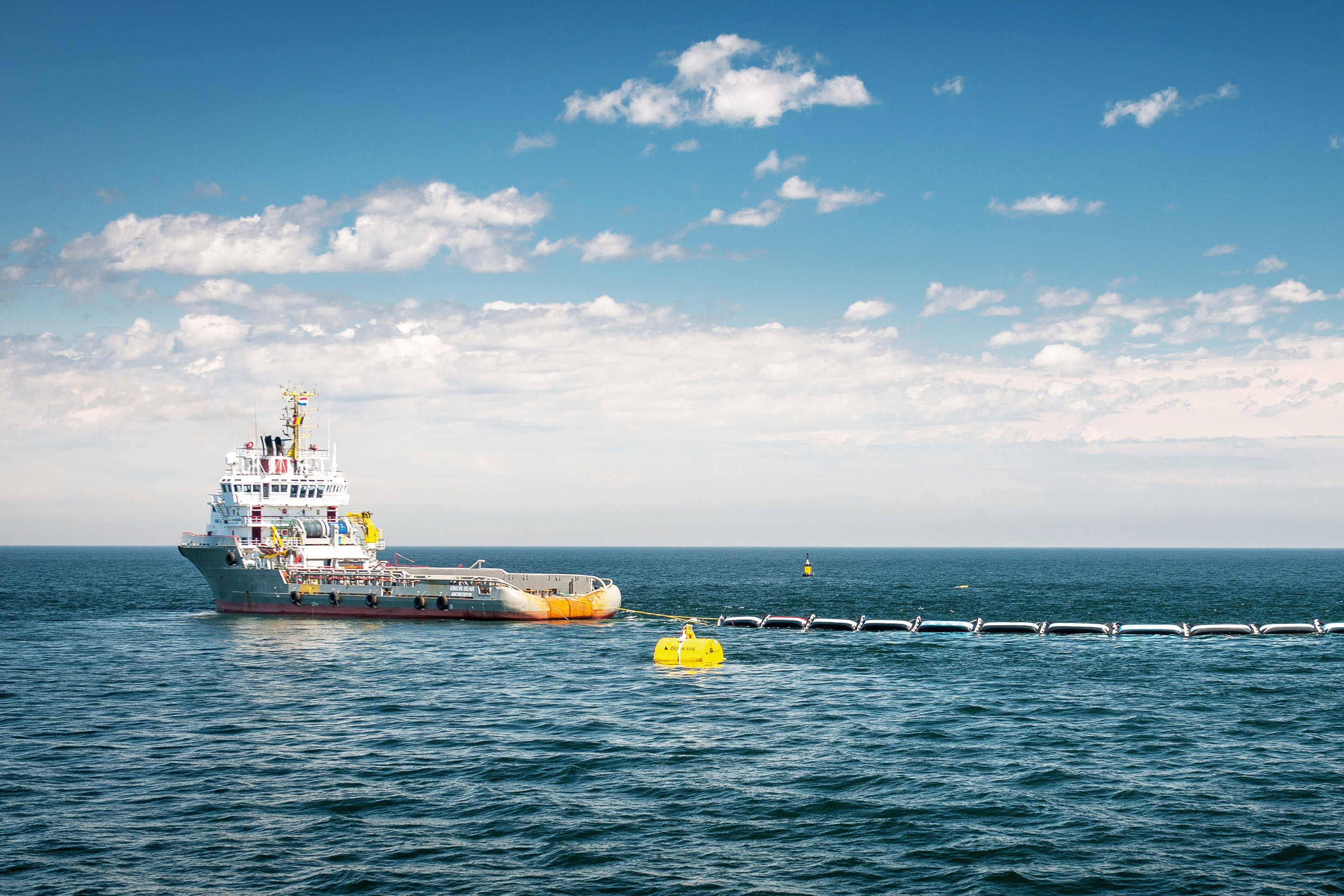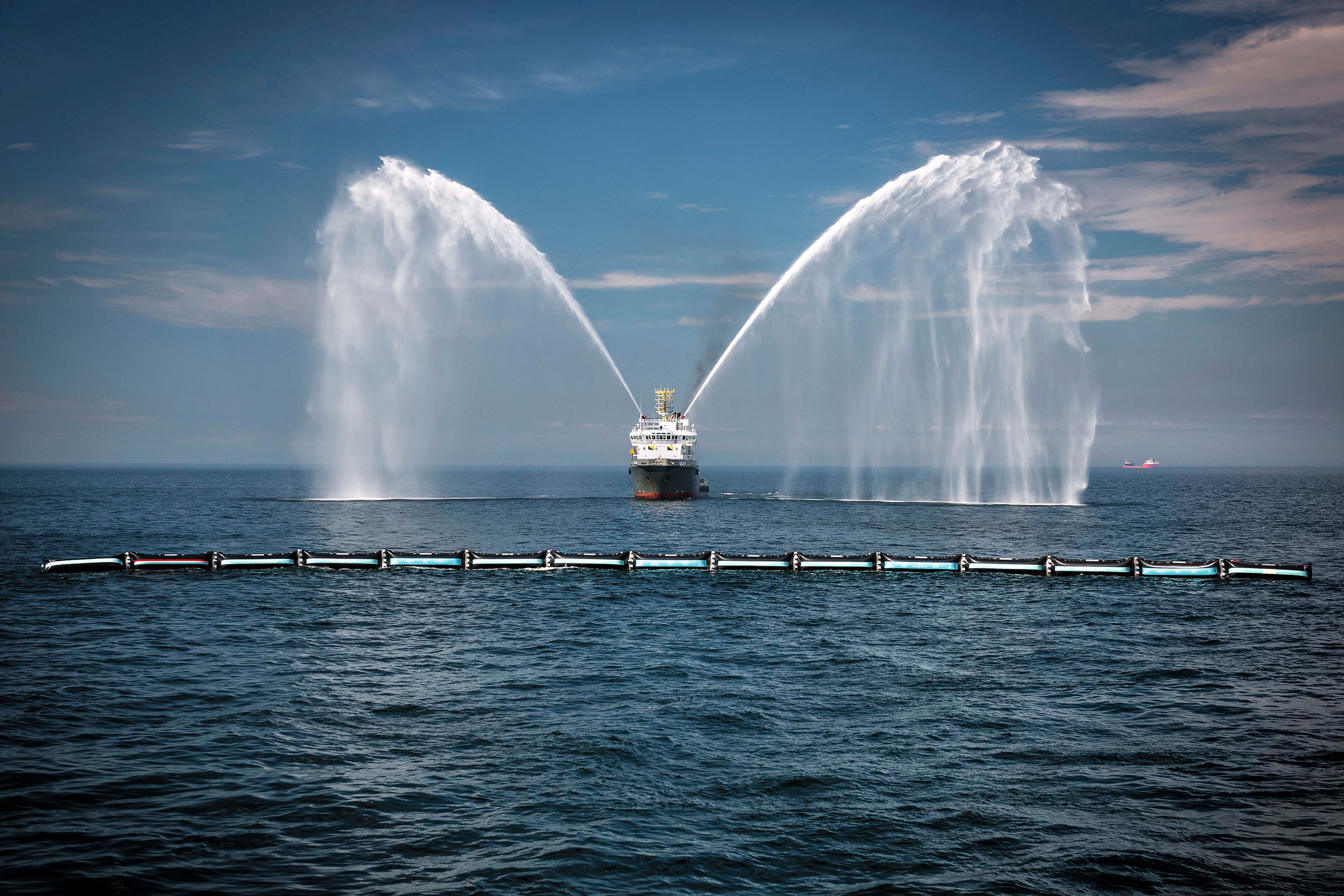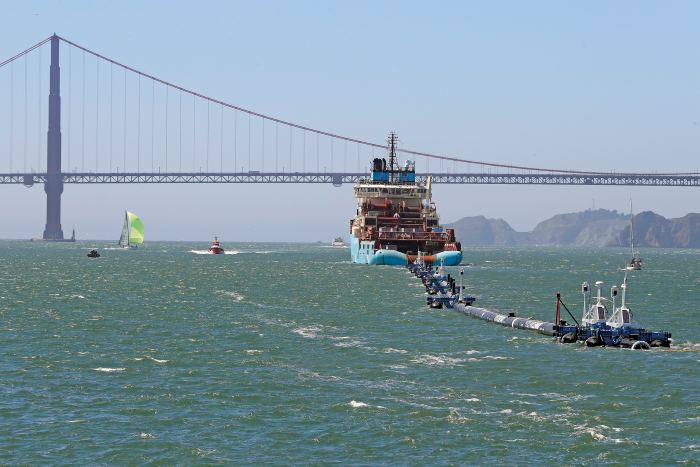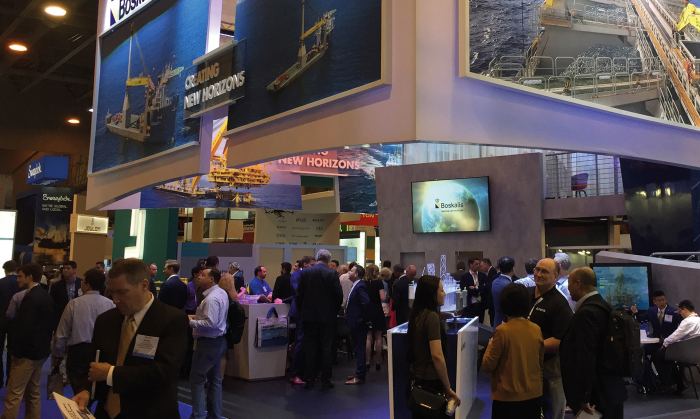For several years now, Boskalis has been supporting the campaign to rid the world’s oceans of plastic pollution. In one initiative, Boskalis helped The Ocean Cleanup with its North Sea prototype tests in 2016 and 2017. The pioneering solution that emerged is being tested in the Great Pacific Garbage Patch.
His role wasn’t in the limelight but Gertjan Grundlehner, Head of R&D Boskalis Offshore Technology, is playing an important role in development for The Ocean Cleanup.
Can you outline the scale of the plastic pollution problem and how these ocean garbage patches form?
“Annually, some 8 million tons of plastic litter enters the seas worldwide. Ocean currents concentrate a part of this litter in five subtropical gyres that are also known as the world’s ‘ocean garbage patches’. The largest is the Great Pacific Garbage Patch between Hawaii and California. If we ignore it, this plastic will impact our ecosystems, health and economies. The problem requires a combined solution: we need to tackle it at source and clean up our seas where we can.”
Tell us about The Ocean Cleanup and the initial idea? What was the plan?
“The Ocean Cleanup is led by the young inventor and entrepreneur Boyan Slat, who is the youngest ever recipient of the United Nations Champion of the Earth Award. Boskalis initially helped Boyan with his plastic-busting vision through sponsorship-in-kind: our vessels towed their prototypes out into the North Sea and Boskalis was involved behind the scenes as well, giving feedback on their developments.”


“Boyan’s design involves massive booms that collect marine litter using the ocean’s forces. The booms are floaters with a screen underneath that have been designed to passively catch and concentrate litter in the center. This litter is retrieved by boats. The initial idea was to develop one large boom spanning no less than 100 kilometers. This boom was to be fixed to the 4,000-meter-deep seabed by anchors, which would have involved an unprecedented marine installation operation.”
THE OCEAN CLEANUP EXPECTS THAT A FULL-SCALE ROLL-OUT OF THE SYSTEM COULD CLEAR UP TO 50% OF THE GREAT PACIFIC GARBAGE PATCH IN FIVE YEARS.
Like many pioneering concepts, this early design was not an immediate success?
“No, but The Ocean Cleanup persevered. Boskalis originally helped to install a prototype of this design in the North Sea in 2016. This live test taught them a lot but it also led to the conclusion that the design needed a major overhaul.”
“Basically, it was back to the drawing board for The Ocean Cleanup. But in the meantime, The Ocean Cleanup had completed a lot of research into how the currents and the wind behave in the garbage patch. Initially, we thought that the movement in a gyre was a wide circle but it turned out to consist more of small spirals. So it was decided that there was no need to anchor one large boom; but use a number of smaller, free-floating booms that would be driven by the wind, waves and current. We soon realized that this solution was a promising way of collecting waste passively. As Boskalis we have been helping The Ocean Cleanup for more than a year now by providing know-how and insights to develop this concept further.”
“The Ocean Cleanup expects that a full-scale roll-out of the system could clear up to 50% of the Great Pacific Garbage Patch in five years. The floating booms are designed to capture small plastic particles from one centimeter up to discarded fishing nets measuring tens of meters. Removing the plastic while most of it is still large stops it breaking down into dangerous micro-plastics.”
Boskalis is well used to thinking “out of the box”?
“At Boskalis, we have a wealth of experience in supporting innovation processes and tons of practical expertise with the deployment of floating systems at sea. We also know that every innovation has its own particular challenge. But by asking the right questions and drawing on our expertise, we can find the right solutions.”
Is it true you got valuable new insights when you were ‘playing with models’ in your garden pond?
“Ha ha. Well, yes actually, the challenge was to make a boom that consistently catches plastic in an environment that is continuously changing. I started to tinker with an idea and played around with a system in the pond at home. We wanted something that, as it were, always catches the plastic on one side and is also pushed around by natural forces while keeping things as simple as possible. The trick is to make sure that the screen always captures the plastic but that the plastic doesn’t just float away from the boom again.”
THE BOOMS ARE POWERED BY FREELY AVAILABLE FORCES OF NATURE!
“Although other ideas were under development, The Ocean Cleanup embraced the idea of the pond model and the system that was towed out last October to be tested in the Great Pacific Garbage Patch is based on this extremely simple model. Together with the engineers of The Ocean Cleanup we managed to let the free-floating booms behave in such a way that they can continuously collect floating litter, without drifting out of the ocean’s garbage patches. The smaller booms adapt to variations in wind, waves and currents, which is a major benefit. What’s more, propulsion or seabed anchoring aren’t required. The booms are powered by freely available forces of nature! But there is still quite a way to go. The interaction between the screen and the litter, which are both moved by waves, is extremely complicated. The Ocean Cleanup has developed a detailed program to investigate this in the garbage patch, learn from it and hopefully demonstrate that it is technically possible to clean the garbage patches.”

Tow-out of the system to the Great Pacific Garbage Path
This system also helped make the equipment scalable?
“These independent, smaller, free-floating systems have advantages in terms of cost and time. For one thing, there’s no need for expensive foundations in deep ocean waters. Secondly, The Ocean Cleanup can scale up their ‘fleet’ of booms when more funding becomes available once the first booms have provided proof of concept. Ultimately, The Ocean Cleanup hopes to place up to sixty booms measuring up to 1,000 meters each. A major benefit of such a constellation is that the failure costs are also substantially less: if one boom breaks down, the others still remain in operation.”
TOGETHER, WE ARE STRIVING TO CREATE NEW, CLEANER HORIZONS FOR THE WORLD’S OCEANS!
Is Boskalis helping in other ways too?
“Yes, we also help The Ocean Cleanup find cost-effective and marine-life-friendly retention and extraction solutions. The material used in the North Sea prototype proved to be too weak to weather the forces of nature. Choosing a fit-for-purpose material is all about finding the right balance between material properties, performance, technical requirements and expectations as to life expectancy and more. Here again, our long-standing experience in this field helps The Ocean Cleanup in their search for the best solution. Together, we are striving to create new, cleaner horizons for the world’s oceans!”
